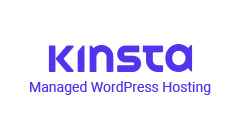Whether you’re trying to add an existing website or build a new one, here’s how a paid discovery phase can add value to your project.
A good discovery phase isn’t just a technical checklist – it should analyze the project through the scope of the business to find opportunities for success. Ultimately, things need to be examined from a more broad context first before getting down to implementation – why are we doing this and how can it best benefit the business?
What is discovery?
A discovery phase is a consulting engagement entered into with the goal of creating a detailed scope of work for a project. The consultant and the client will work together to examine business needs, existing frameworks, and options for implementation.
In practice, it can look like a combination of any of the following: a series of meetings, interviews, written responses or questionnaires, and finally, a deliverable provided by the consultant.
What you should end up with
- Clear scope of work outlining exactly what should be done and how it will be implemented
- Pro/con analysis of different options including cost variances
- Budget and timeline for implementing the work, if the consultant also provides said services
Benefits to the client
- Clear scope of work which can then be shopped around if necessary
- Identifies opportunities for cost savings or revenue generation
- Equally important, it identifies potential pitfalls that were not considered
- You also end up with a consultant who understands your business and a plan that has taken its needs into consideration
- Everyone is clear on expectations, which equates to a quicker, smoother, and more efficient project
- This also means less money spent on scope creep and revisions
Basic example of an effective discovery project
- Client comes to developer with a project requesting a form to be built so their customers can upload PDF order forms
- A discovery phase which analyzes their business needs, project requirements, and existing framework may lead to an online version of the same form, or even a client login area where customers can keep track of their entries over time.
- Final result is a better user experience for customers and decreased administrative costs for the client

